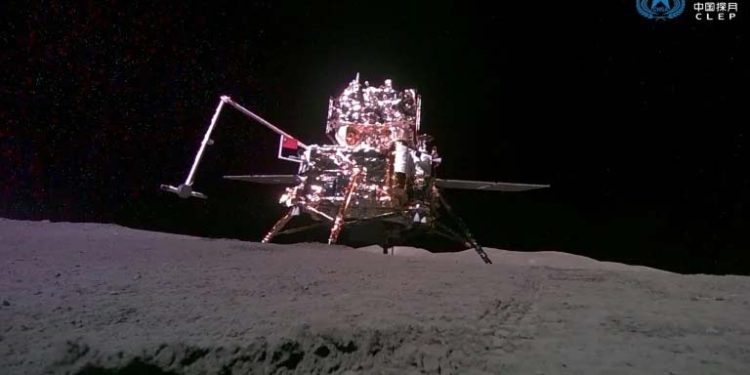A Chinese probe carrying samples from the far side of the Moon will return to Earth on Tuesday, capping a technically complex 53-day mission heralded as a world first.
Beijing’s space agency said the Chang’e-6 spacecraft “will come back to Earth carrying precious ‘gifts’ on June 25”, without giving an estimated arrival time.
Experts say it will likely touch down on a barren prairie in the northern Inner Mongolia region at around midday (0400 GMT).
The probe comes bearing soil and rocks from the side of the Moon that faces away from Earth, a poorly understood region that scientists say holds great research promise because its rugged features are less smoothed over by ancient lava flows than the near side.
That means the materials harvested there may help us to better understand how the Moon formed and how it has evolved over time.
Chang’e-6 blasted off from a space centre on the island province of Hainan on May 3 and descended into the Moon’s immense South Pole-Aitken Basin almost exactly a month later.
It used a drill and robotic arm to scoop up samples, snapped some shots of the pockmarked surface and planted a Chinese flag made from basalt in the grey soil.
On June 4, the probe made the first ever successful launch from the far side in what Chinese state news agency Xinhua called “an unprecedented feat in human lunar exploration history”.
China’s space agency said in a social media post on Friday that Chang’e-6 was “70 percent” of the way back to Earth.
State broadcaster CCTV said Tuesday that the returner module would “re-enter the Earth’s atmosphere and is planned to touch down at the landing site in Dorbod Banner, Inner Mongolia”.
– National pride, misinformation –
China’s burgeoning space exploits are a point of pride for the government, and state media outlets launched rolling coverage of the imminent landing on Tuesday morning.
Xinhua broadcast footage on Monday of space agency officials in orange jackets manoeuvring trucks and helicopters onto the dust-blown landing site.
It reported that local farmers and animal herders have been evacuated from the area ahead of the touchdown.
“We hope that our country’s space exploration will continue to advance and that our nation will become stronger,” Uljii, a local herdsman, told Xinhua.
But the mission has also sparked a torrent of online misinformation, with some users of the Weibo social media platform seizing on the unfurling of the Chinese flag to push the false claim that Washington faked the Apollo Moon landings, AFP Fact Check found.
– ‘Space dream’ –
Plans for China’s “space dream” have shifted into high gear under President Xi Jinping.
Beijing has poured huge resources into its space programme over the past decade, targeting ambitious undertakings in an effort to catch up to traditional space powers the United States and Russia.
It has built a space station, landed robotic rovers on Mars and the Moon, and become only the third country to send astronauts into orbit.
But the United States has warned that China’s space programme masks military objectives and an effort to establish dominance in space.
China aims to send a crewed mission to the Moon by 2030 and plans to eventually build a base on the lunar surface.
The United States also plans to put astronauts back on the Moon by 2026 with its Artemis 3 mission.




















